The NVIDIA SHIELD Tablet Review
by Joshua Ho on July 29, 2014 9:00 AM ESTCPU Performance
As the first Tegra K1 device the Shield tablet is especially interesting. For those unfamiliar with the Tegra K1, NVIDIA integrated four ARM Cortex A15r3 variant cores along with a fifth companion A15r3. While on the surface it seems the CPU configuration it’s largely similar to the Tegra 4, there are some substantial differences. On the process tech side, the move to 28HPm adds SiGe source and drains for PMOS transistors, which dramatically improves drive current and makes it possible to bump clocks up to 2.2GHz for the CPU cores. The new revision of Cortex A15 also means that there’s better power management which should help with power efficiency (and thus battery life). The result is that peak CPU voltage drops from 1.4 volts in Tegra 4 to 1.2V in Tegra K1, and peak clocks are higher in the K1 as well.
Of course, the truly interesting aspect are benchmarks, as those will really show the differences between Tegra 4 and Tegra K1. It will also help to establish how Tegra K1 fares against the competition.
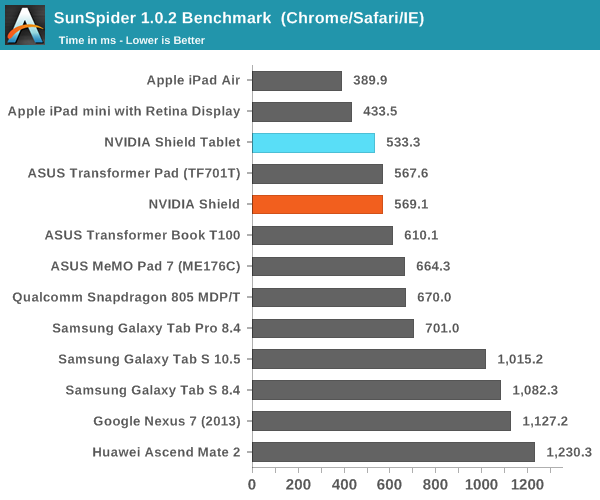
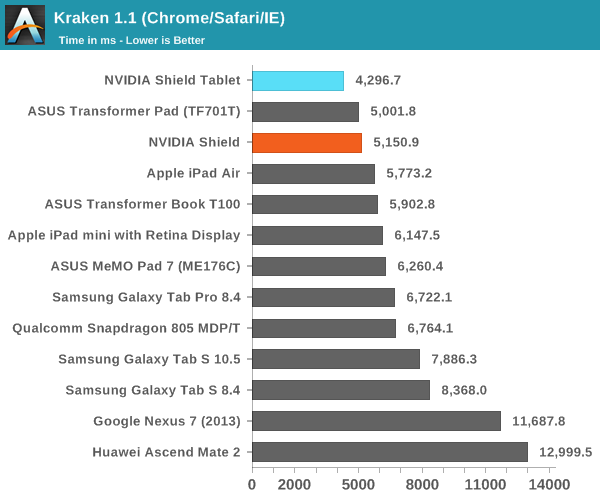
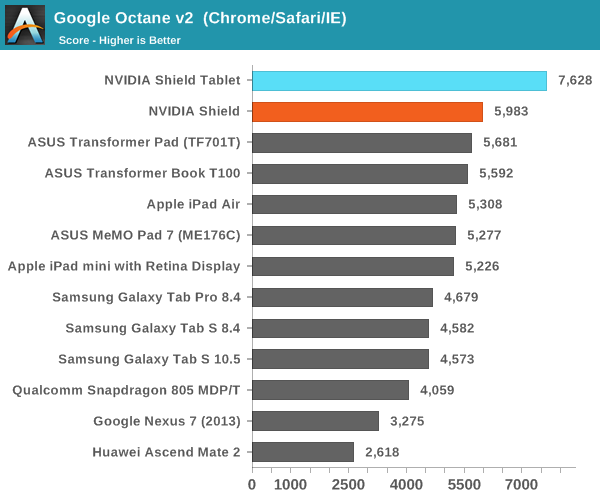
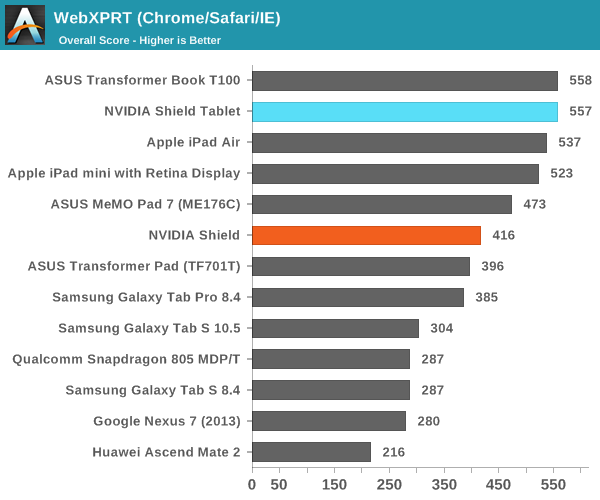



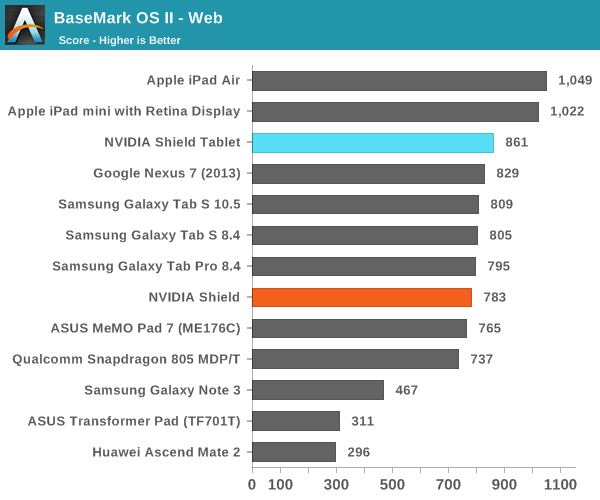
Despite the largely similar clock speeds compared to the Snapdragon 800 we see that the Tegra K1 is generally a step above in performance. Outside of Apple’s A7 SoC and x86 SoCs, NVIDIA is generally solidly ahead of the competition. Of course, as a gaming tablet there’s a strong need for GPU performance, so we'll look at that next.










174 Comments
View All Comments
ol1bit - Sunday, October 19, 2014 - link
I know this is old, but my tf201 with a tegra 3 still plays games great! Uninstalling facebook really helped overall speed!UpSpin - Wednesday, July 30, 2014 - link
The Tegra K1 is lacking an on-chip modem, thus it will always be less efficient than Qualcomm processors, which means we'll probably never see this SoC in a smartphone.I think we'll see much more Tegra producs with the K1, because it's really an impressive SoC. But NVidia seems to care less about the typical consumer tablets, more about their own console ecosystem (Shield) and most importantly embedded systems (cars), where NVidia has some huge partners and the Tegra gets widely used. (Tesla, Mercedes, VW, Audi, ...). There they can make more money most probably and don't have to give their IP away for free more or less to remain competive against companies like Mediatek.
fivefeet8 - Thursday, July 31, 2014 - link
The Snapdragon 805 is also in the same boat without an on-chip modem.Knowname - Wednesday, July 30, 2014 - link
who cares about the display? I get mine on Tuesday (preordered from Amaizon and picked no rush shipping fo da bling xD) and 90% of the time I'll be using it to play steam games on my TV.happycamperjack - Wednesday, September 3, 2014 - link
Just got it. The screen is actually pretty good! Much better than I expected. Great contrast, black level, colors. It's more than good enough for a tablet. I got the original Nexus 7. This is much much much better than that! It looks similar to me to the new Nexus 7.sherlockwing - Tuesday, July 29, 2014 - link
No Video playback battery life test?JoshHo - Tuesday, July 29, 2014 - link
It was definitely planned but there wasn't enough time to finish that test. I'll update the review once I have those results.ams23 - Tuesday, July 29, 2014 - link
Josh, how about some additional tests using the battery saver mode? Limiting fps to 30fps and reducing CPU clock operating frequencies should dramatically extend the gaming battery life with very graphically intensive benchmarks.On a side note, I should point out that not only does Tegra K1 have much higher Onscreen performance in GFXBench T-Rex HD test (which is the test used for battery lifetime and a minimum value long term performance data point) compared to most other ultra mobile GPU's, but is also renders with significantly higher [FP32] precision too. According to Oleg at B3D forum, Kishonti uses low precision FP16 shaders in the T-Rex test by default. Mobile Kepler and other modern day PC and console GPU architectures are designed for FP32 precision and not mixed or lower precision.
mkozakewich - Tuesday, July 29, 2014 - link
This! It's horrible to complain about the extra dynamic range like it's a bad thing, and then NOT test the battery-saving features.Limit the CPU such that it runs like the Shield portable, then set the framerate to 30 Hz and run the gaming battery tests again.
(On my Surface Pro, for example, I'll set everything to the lowest possible, about 800 MHz, and I'll get a couple more hours out of it while playing games. High-Performance mode is for when you're plugged in.)
JoshHo - Tuesday, July 29, 2014 - link
Those are definitely planned as well, there were some issues with meeting deadlines so battery life testing had to be cut down somewhat.